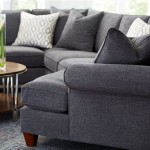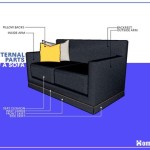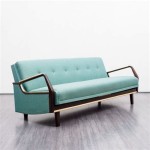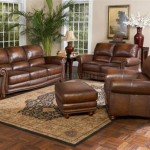How To Recover A Sofa Without Sewing
Recovering a sofa offers a cost-effective alternative to purchasing new furniture. While traditional upholstery often involves sewing, numerous methods exist to refresh a sofa's appearance without relying on needle and thread. These techniques range from simple draping and slipcovering to more involved, no-sew upholstery projects. The choice of method depends on the desired aesthetic, the sofa's style, and the level of effort one is willing to invest.
The allure of no-sew sofa recovery lies in its accessibility. Individuals without sewing skills or access to sewing machines can still achieve professional-looking results. These techniques also offer flexibility, allowing for easy changes in décor and seasonal updates. Furthermore, no-sew methods can be quicker and less demanding than traditional upholstery, making them ideal for DIY enthusiasts with limited time.
Preparing the Sofa for Recovery
Before embarking on any no-sew sofa recovery project, adequate preparation is crucial. This involves cleaning the existing upholstery, addressing any structural issues, and gathering the necessary materials. A thorough cleaning removes dust, dirt, and stains that could compromise the final result. Vacuuming the sofa, including crevices and under cushions, is an essential first step. Stubborn stains may require spot cleaning with appropriate upholstery cleaners. Always test cleaners on an inconspicuous area first to prevent discoloration or damage.
Once the sofa is clean, inspect it for any structural problems. Loose legs, wobbly frames, or sagging cushions should be addressed before applying any new covering. Tighten screws, reinforce joints with wood glue, or replace worn-out cushion filling. Ignoring these issues will result in a finished product that looks and feels less than ideal. Addressing structural problems also extends the lifespan of the sofa.
Gathering materials in advance streamlines the recovery process. The type of fabric chosen significantly impacts the overall look and feel of the recovered sofa. Consider factors such as durability, stain resistance, and texture. Fabrics like canvas, denim, and microfiber are popular choices for their resilience. Measure the sofa accurately to determine the amount of fabric needed, adding extra for overlap and adjustments. In addition to fabric, essential supplies may include scissors, measuring tape, a staple gun, staples, fabric glue, safety pins, and decorative elements like trim or buttons.
Draping and Slipcovering: Simple No-Sew Options
Draping and slipcovering represent the simplest approaches to no-sew sofa recovery. Draping involves loosely covering the sofa with fabric, creating a relaxed and informal look. This method works well for sofas with simple lines and requires minimal effort. Select a fabric with good drape, such as linen or cotton, and simply arrange it over the sofa, allowing it to fall naturally. Tuck the fabric into crevices and secure it with safety pins or furniture tacks for a more tailored appearance.
Slipcovering offers a more fitted look than draping. Ready-made slipcovers are available in various sizes and styles, providing a convenient way to transform a sofa's appearance. However, for a truly custom fit, consider creating a no-sew slipcover using fabric and fasteners. Measure the sofa carefully and cut the fabric into sections that correspond to the different parts of the sofa, such as the back, seat, arms, and cushions. Pin the sections together on the sofa, adjusting as needed for a snug fit. Once satisfied with the fit, use fabric glue or a staple gun to secure the seams, creating a seamless slipcover.
Securing the slipcover is crucial for a polished look. Tucking the fabric tightly into the gaps between the cushions and the frame helps maintain a smooth silhouette. Furniture tacks or upholstery staples can be used to secure the fabric along the bottom edge of the sofa, providing a clean and finished appearance. Elastic straps can also be added to the underside of the slipcover to keep it in place, preventing it from shifting or bunching.
No-Sew Upholstery with Staples and Glue
For a more permanent and tailored look, no-sew upholstery techniques using staples and glue offer a viable alternative to traditional sewing. This method involves wrapping the sofa with fabric and securing it to the frame using a staple gun and fabric glue. While it requires more precision and effort than draping or slipcovering, it can achieve results that closely resemble professional upholstery.
Begin by removing any existing upholstery from the sofa frame. This provides a clean surface for applying the new fabric and allows for a better understanding of the sofa's construction. Carefully remove the old fabric, paying attention to how it was attached to the frame. This will serve as a guide for attaching the new fabric. Use a staple remover to remove any existing staples. Consider taking photos of the upholstery process before removal to aid in the re-upholstery process.
Cut the fabric into sections that correspond to the different parts of the sofa frame. Allow for ample overlap to ensure that the fabric can be securely attached. Begin with the back of the sofa, stretching the fabric taut and securing it to the frame with staples. Work your way around the sofa, section by section, ensuring that the fabric is smooth and wrinkle-free. Use fabric glue to reinforce the stapled areas, providing extra adhesion and preventing the fabric from fraying.
Pay particular attention to corners and curves, as these areas can be challenging to upholster. Use pleats and folds to ease the fabric around these contours, creating a smooth and professional finish. Secure the pleats and folds with staples and glue, ensuring that they are evenly distributed and do not create unsightly bulk. Consider using specialized upholstery tools, such as a curved needle and thread, to hand-stitch these areas for added security and refinement.
Cushions can also be recovered using no-sew techniques. Measure the cushions and cut the fabric to size, allowing for seam allowances. Wrap the fabric around the cushions and secure it with fabric glue or a staple gun. Consider adding zippers or Velcro closures for easy removal and cleaning. For a more professional look, use piping or trim to conceal the seams and add decorative detail.
Adding Decorative Elements and Finishing Touches
Once the sofa is recovered, adding decorative elements and finishing touches can enhance its overall appearance. Trim, buttons, and decorative stitching can add visual interest and personalize the design. Consider using contrasting fabrics or patterns to create focal points and add character to the sofa.
Trim can be attached to the edges of the sofa using fabric glue or a staple gun. Choose trim that complements the fabric and adds a touch of elegance. Buttons can be used to create tufted effects, adding depth and texture to the sofa. Attach the buttons using upholstery thread and a curved needle, ensuring that they are securely fastened.
Decorative stitching can be added using fabric markers or paint. Create simple patterns or designs to personalize the sofa and add a unique touch. Consider using stencils to create more complex patterns. Protect the fabric with a sealant to prevent the stitching from fading or bleeding.
Finally, accessorize the recovered sofa with throw pillows and blankets to complete the look. Choose pillows and blankets that complement the fabric and add comfort and style to the seating area. Arrange the pillows and blankets in a visually appealing way to create a welcoming and inviting space.
Recovering a sofa without sewing offers a range of creative and cost-effective options for transforming furniture. By carefully preparing the sofa, choosing the right materials, and employing appropriate no-sew techniques, individuals can achieve professional-looking results and breathe new life into their living spaces. These methods provide flexibility and accessibility, empowering DIY enthusiasts to express their personal style and update their décor without the need for sewing skills.

Do It Yourself Divas Diy Strip Fabric From A Couch And Reupholster

How To Reupholster A Couch Taking Boring Brown Sectional From Basic Beautiful

How To Reupholster A Couch The Easy Way

How To Reupholster A Couch Without Removing The Old Fabric Erfly House

Diy Reupholster 3 Seater Sofa From Fixed To Removable Covers

Tutorial Diy Upholstery Sofa Rehab A Jennuine Life

How To Reupholster A Couch The Easy Way

Easy And Creative Ways Fix An Old Sofa Remodelaholic

How To Reupholster A Couch Without Removing The Old Fabric Erfly House

How To Reupholster A Couch Sofa Part 1 Lifewithqueenii








